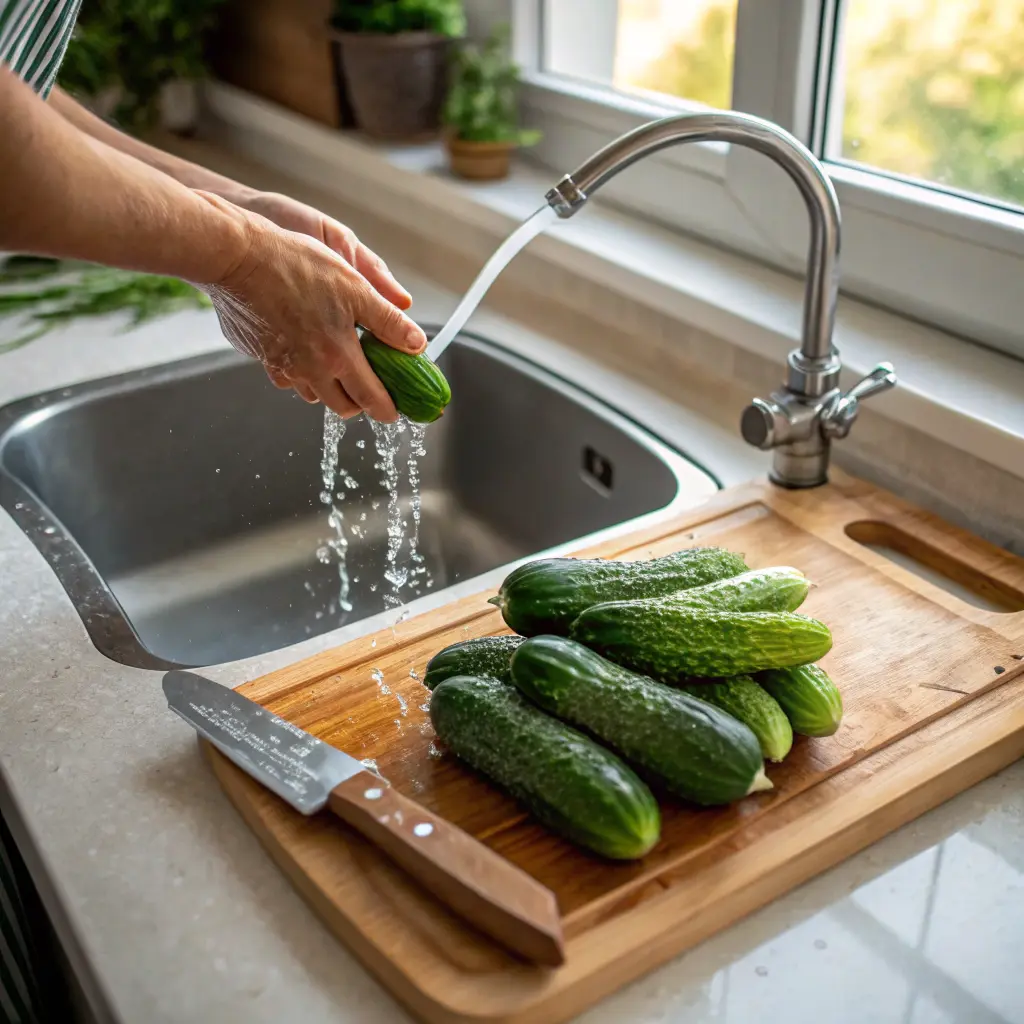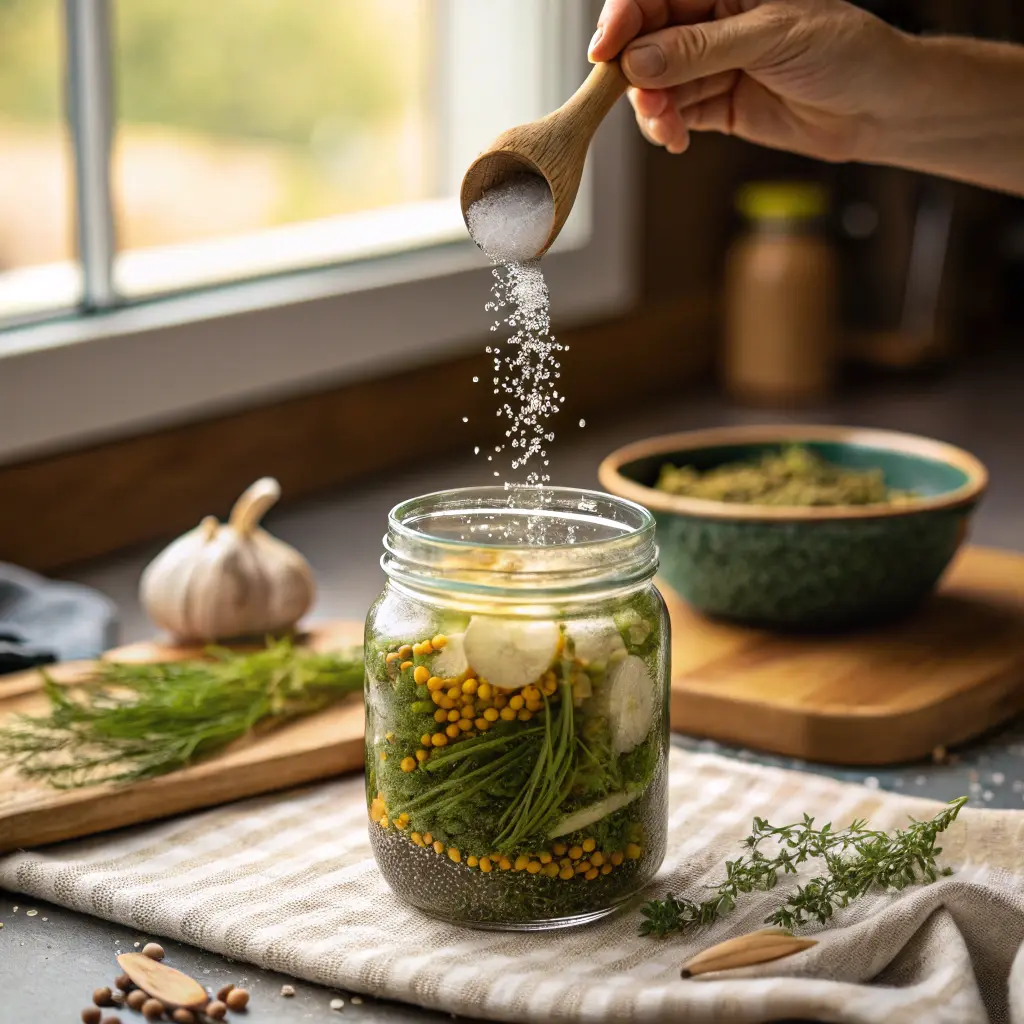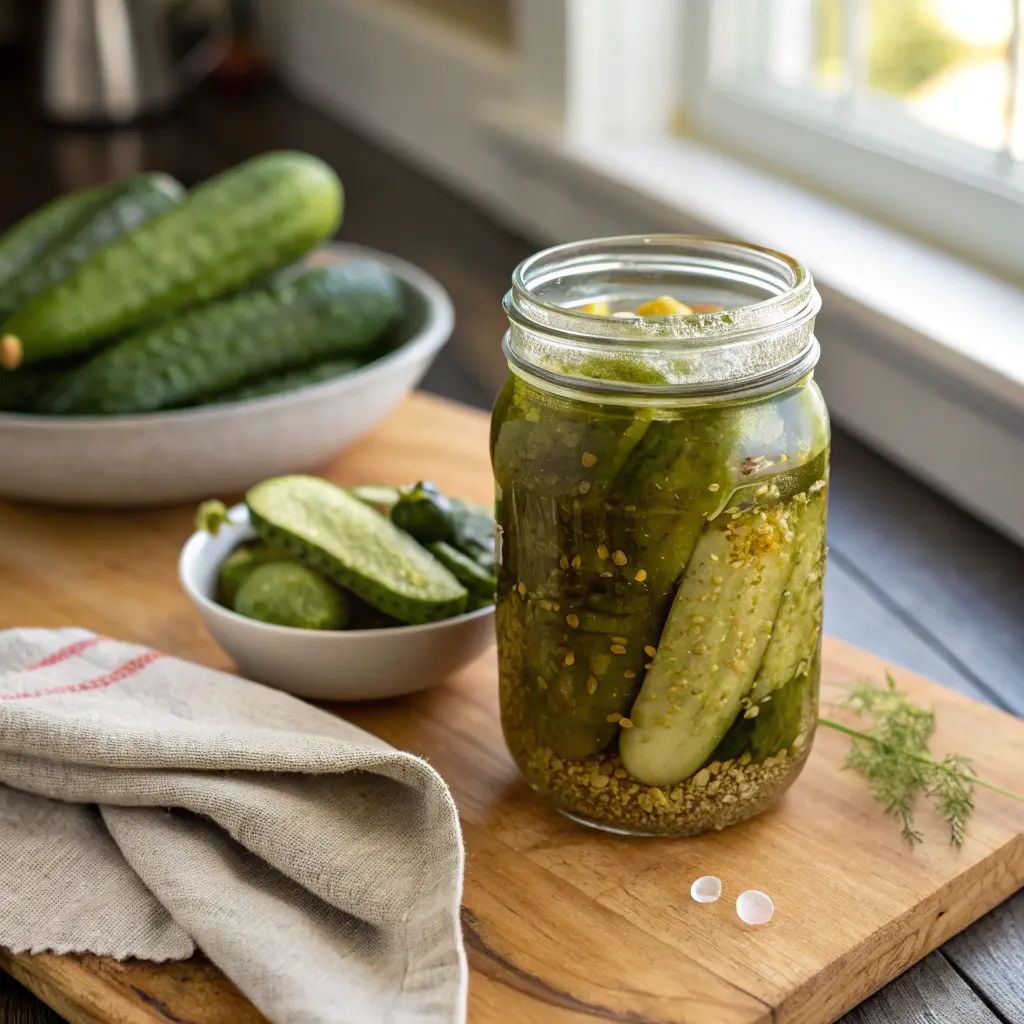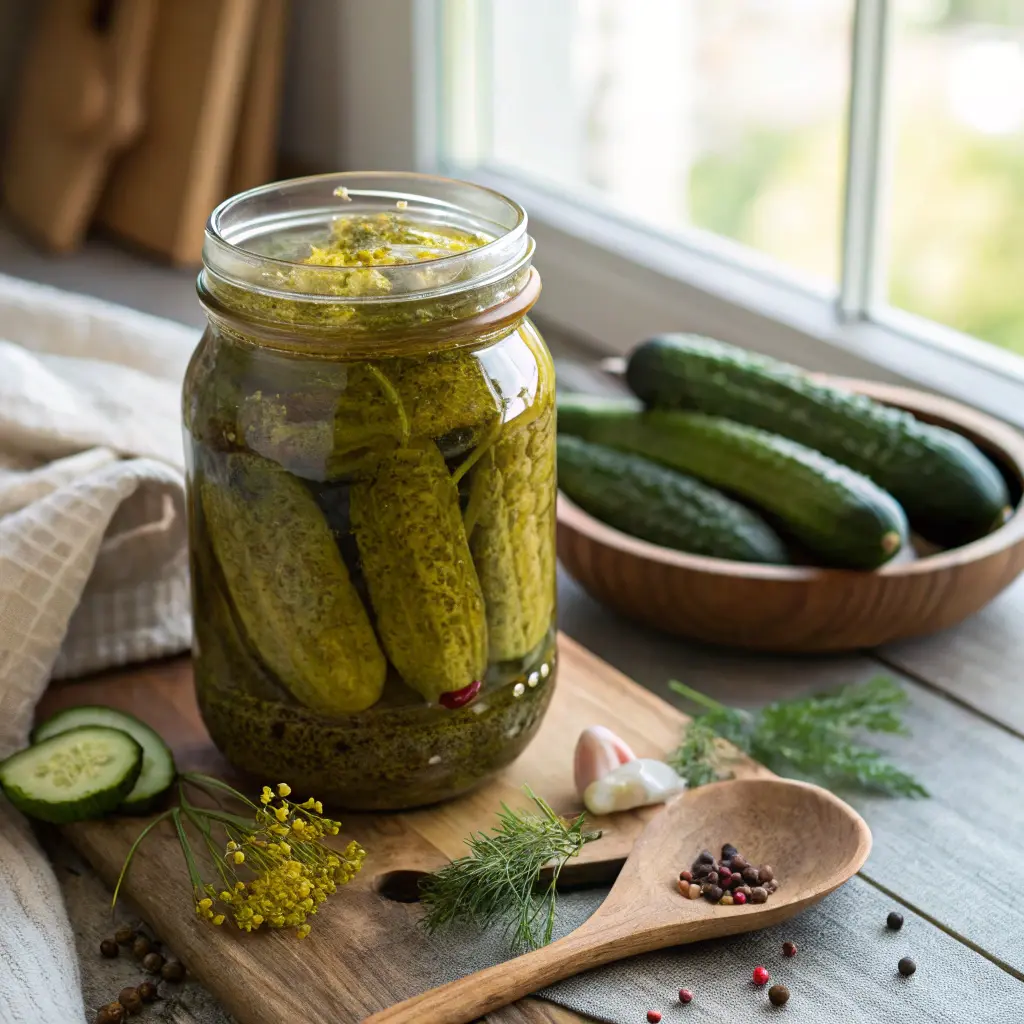Sour Pickles: A Quick Introduction
Sour pickles have charmed palates for centuries, delivering that characteristic tang and refreshing crunch. Whether you’re hunting for a simple snack or a complex flavor bomb, sour pickles can fit the bill.
Below, we’ll explore 7 powerful ways to enjoy and create amazing sour pickles, from essential ingredients to advanced fermentation tips.
If you want to stop boring side dishes, keep reading!
What Are They?
Pickling as a preservation technique dates back thousands of years, but sour pickles gained fame in Eastern Europe.
mmigrants introduced these vinegar-based or fermented cucumbers to American delis, where they quickly grew popular.
Over time, local variations—such as dill-heavy or half-sour versions—expanded the range.
How Are They Different from Dill Pickles?
While dill pickles focus on herbaceous dill flavors, these tangy cucumbers emphasize acidity—achieved either through lactic acid fermentation or a potent vinegar brine. They can include dill, but the tanginess remains front and center.
Some people use the term “sour” interchangeably with “half-sour” or “full-sour,” depending on the fermentation level.
Health Benefits of Eating Sour Pickles
This condiment can be low in calories and supply vitamins and minerals—especially when naturally fermented.
Probiotic strains may support gut health, and vinegar-based versions help curb cravings for salty snacks. Of course, one should monitor sodium levels if that is a concern.
Ingredients & Essential Supplies for a Perfect Brine
Choose the right cucumbers: Kirby varieties are popular for pickling due to their bumpy exterior and minimal seeds, while pickling cucumbers with crisp skin and smaller size ensure uniform brining. Freshness matters—avoid soft spots or a yellowish tint, which can result in mushy pickles.
For a perfect brine, use non-iodized or pickling salt to ensure a cleaner flavor, and filtered water to prevent chlorine from interfering with fermentation. If not fermenting, white distilled or apple cider vinegar provides a sharper tang. Flavorings such as garlic, mustard seeds, peppercorns, or dill add complexity.
Fermented vs. Vinegar-Brined Variants
Fermented sour pickles rely on lactic acid bacteria, requiring time at room temperature, while vinegar-brined versions are quicker but might lack probiotic benefits. Both methods yield tangy results, though fermentation produces a more complex flavor profile.
Step-by-Step Guide to Making Homemade Sour Pickles
Step 1: Preparing the Cucumbers
- Wash Thoroughly: Grit or pesticide residue can spoil your pickles.
- Trim Ends: The blossom end can harbor enzymes that soften pickles.
- Optional Slicing: Keep whole for crunchy pickles or cut into spears for faster brining.

Step 2: Making the Brine
- Fermented Approach: A salt-water mix (around 2–3 tbsp salt per quart) plus seasonings.
- Vinegar Approach: Vinegar, water, salt, sugar (optional), and spices. Heat until salt dissolves.

Step 3: Fermentation & Storage
- Fermenting: Submerge cucumbers under brine in a jar at room temp. Let them sit 3–7 days, checking daily for desired sourness.
- Vinegar-Brined: Pack cucumbers in sterilized jars, pour hot vinegar mixture, seal. Cool before storing.

Step 4: Taste-Testing & Adjustments
- Sample a pickle after a few days. If it’s not sour enough, continue fermenting.
- If you want more heat, add chili flakes or fresh jalapeños.
- For a sharper bite, add more vinegar or salt.
7 Pro Tips for Crunchy & Flavorful Sour Pickles
Tip #1: The Best Type of Salt for Pickling
Use pickling or kosher salt, as table salt can contain anti-caking agents that cloud the brine or alter flavor.
Tip #2: How to Keep Pickles Crisp
Tannins in grape or oak leaves can help. Some add a pinch of calcium chloride (pickle crisp) for commercial-level crunch.
Tip #3: How Long to Ferment Pickles for the Best Flavor
3–5 days yield half-sour (milder), 7+ days produce a deeper tang. Adjust to your taste.
Tip #4: How to Store Pickles for Long-Lasting Freshness
Keep them cold once you reach the desired sourness, slowing further fermentation. Refrigeration extends shelf life.
Tip #5: Can You Reuse Pickle Brine?
Yes, but potency might drop. If fermentation-based, the brine can be used once more with fresh cucumbers, though results vary.
Tip #6: Adding Spices & Herbs for Extra Flavor
Experiment with fresh dill, bay leaves, coriander seeds, or chilies. The brine can handle many robust flavors.
Tip #7: The Right Pickling Jar Matters!
Use sterilized glass jars with secure lids. For fermentation, opt for airlock lids or burp daily to release gas.
Sour Pickle Variations & Flavor Twists
Garlic & Dill Pickles
Classic combo with a pungent garlic punch and herby dill undertones.
Spicy Pickles
Add jalapeños, habaneros, or chili flakes to the brine. Perfect for heat lovers.
Sweet & Sour Pickles
Incorporate a bit of sugar or honey to mellow out the acid, ideal for those who want tang balanced with sweetness.
Pairing Pickles with Other Foods
Best Dishes to Serve with Pickles
Sandwiches & Burgers: Sliced pickles cut through rich flavors.
Charcuterie Boards: A tangy contrast to cured meats and cheeses.
BBQ & Grilled Meats: The sour crunch complements smoky dishes.
Creative Ways to Use Pickles in Cooking
Chop into Tartar Sauce: Elevates fish dishes.
Dice for Potato Salad: Adds zing to heavy, creamy salads.
Blend into Relish: Perfect topping for hot dogs or brats.
For a true taste experience, try making Sour pickles at home and discover how their bold tang can transform your meals.
FAQs About Sour pickles
What Makes Sour Pickles Sour?
Either lactic acid from fermentation or a vinegar-based brine. Both lead to tangy cucumbers.
Are Sour Pickles Healthy?
Often yes—especially fermented ones containing probiotics. Just watch sodium levels.
How Long Do Homemade Sour Pickles Last?
Refrigerated, they can last several weeks to months, depending on method and acidity.
Can I Make Sour Pickles Without Fermenting?
Yes, use a vinegar brine for quick sour pickles. Fermentation yields a more complex taste.
What’s the Best Way to Store Pickles?
Glass jars in the fridge, ensuring cucumbers stay submerged. Avoid direct sunlight or heat.
Are Sour Pickles Probiotic?
Fermented sour pickles can contain beneficial bacteria. Vinegar-based are not probiotic but still tangy.
Final Thoughts: Mastering the Art of Sour Pickles
Sour pickles offer a mouth-puckering tang that can elevate sandwiches, burgers, or charcuterie boards.
From crunchy half-sour delights to super zesty fermented ones, these pickles bring flavor and fun to your kitchen experiments. For a creative twist on seafood, check out our Spicy Yellowtail Roll.
Whether you choose an old-fashioned fermented recipe or a speedy vinegar approach, the secret lies in top-notch cucumbers, balanced brine, and a bit of creativity. Give sour pickles a try soon, and watch your meal game soar!

